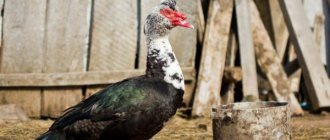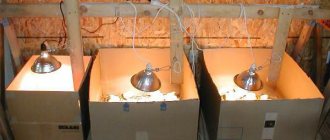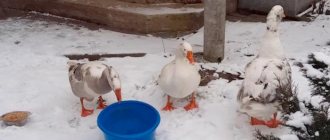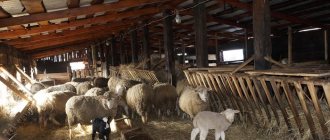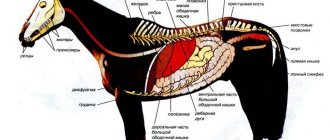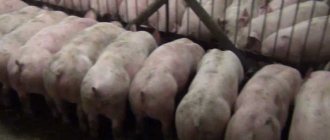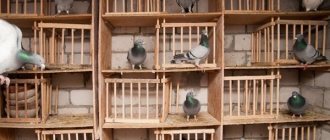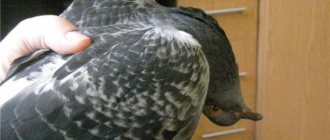Feeding birds directly affects their lifespan. If pigeons live on average 5 years outdoors, then at home they can live up to 15-20 years. So, they need to be provided with a balanced and varied diet, taking into account the characteristics of each breed and the activity of the birds. What is the difference between the diet of domestic and street pigeons, we will find out further.
What do pigeons eat in the wild?
Street birds obtain their own food. As a rule, the components of their diet are:
- plants' seeds;
- cereals (rice, buckwheat, barley, millet);
- greenery;
- insects.
Pigeons often settle in large cities, where it is quite difficult for them to find food. During the autumn and summer periods, birds can still feed on grass, seeds and grains of various plants. However, in cities, flowers and grasses are often cut down, so birds do not receive enough of this food. In addition, they spend a lot of time mining it. Meanwhile, in winter things are even more complicated, since at this time of year many sources of food are completely hidden under a layer of snow.
What do pigeons eat when they don’t have access to seeds, greens and other natural food? In this case, they settle in places where people feed them. So, in their diet appear in large quantities:
- bakery products;
- sunflower seeds;
- food waste near trash cans.
However, this is the wrong diet for birds. Although pigeons eat seeds, bread crumbs and even waste with great appetite, they harm themselves because such food is poorly digested in their stomach, which is due to the peculiarities of the enzyme content and the rate of processing of food particles.
An unbalanced diet leads to a reduction in the average life expectancy of street pigeons by 3 times: their biological age is 13-15 years, but on the street they rarely live longer than 6 years, since they die from pathologies of the gastrointestinal tract.
What do pigeons eat
Pigeons are one of the most common types of birds in the city.
Most people believe that feeding pigeons is necessary with bread and seeds. These products are indeed the basis of the diet of urban pigeons, but the birds need adequate nutrition.
Growth requires a variety of feeds. This is especially true for domestic pigeons of rare breeds. It is precisely because of the need for a varied diet that the lifespan of the urban pigeon is reduced.
Under natural conditions in summer, pigeons eat grass and plant shoots, seeds, and grains. Due to their adaptability to feeding in parks and squares, birds do not receive enough of the active substances they need from human hands.
Their body especially suffers due to the lack of enzymes that are necessary to digest baked goods. Because of this, food remains in the stomach for quite a long time and begins to rot.
This can lead to inflammation of the mucous membrane (gastritis). Indigestible food stored in the digestive organs for a long time prevents the consumption of other foods.
What to give to street pigeons?
Many city residents like to feed pigeons. In addition, they willingly eat almost everything they receive from humans. In order not to harm these birds, you need to at least approximately understand the basic principles of their nutrition. So, the following should be taken into account:
- Pigeons have a fairly small stomach volume, so they need to be fed often, but in small portions;
- so that the birds are able to quickly digest the food they eat, they should not be overfed or force-fed;
- birds should be given food that they can independently grind with their beaks, since they can choke if they swallow solid food;
- If possible, birds should be given a variety of vitamin and mineral complexes that will help balance their “outdoor” diet.
Given these rules, it becomes clear that pigeons should not be given scraps from the human table. They should be fed with the following food:
- cereals, such as barley;
- cereals;
- beans;
- yeast;
- unroasted seeds.
Ideally, pigeons should be given special food from a pet store that contains all the microelements necessary for birds.
Feeding outdoor pigeons
Animals living outdoors most often feed on shoots and grasses. In the absence of additional feeding, the birds will find food on their own. These will be seeds, grains of various cereals, grass leaves.
Be sure to read:
How doves mate: methods of copulation, reproduction, birth of chicks
For purebred pigeons, such feeding will be quite balanced from spring to autumn.
However, often in cities, workers of housing and communal services and public improvement agencies mow the grass and trim the leaves of trees, removing opportunities for adult birds to feed.
Therefore, the feathered inhabitants of cities can starve, eating crumbs of bread or rolls, cereals and other products from human hands.
Feeding poultry
The diet of domestic pigeons is often varied, as it consists of various crops:
| Culture | Representatives |
| Cereals | wheat |
| corn | |
| barley | |
| millet | |
| oats | |
| rice | |
| buckwheat | |
| Cereal legumes | peas |
| Vika | |
| lentils | |
| beans | |
| beans | |
| Oilseeds | sunflower |
| hemp | |
| flax | |
| reps | |
| colzas | |
| Other seeds | weed seeds |
| Root vegetables and tubers | potato |
| carrot | |
| onion | |
| Greenery | cabbage |
| salad | |
| spinach | |
| sorrel |
In order for the diet to be balanced, it is necessary to correctly create a menu. The main food is a grain mixture, which can be bought at any pet store or prepared with your own hands. Here is the optimal composition of the mixture:
- oats – 50%;
- barley – 30%;
- pearl barley – 10%;
- millet – 10%.
Millet is a grain that must be fed to pigeons with great care as it can be toxic to them.
When feeding pigeons, you should also consider the following recommendations:
- Wheat should be fed in small quantities, as it can lead to obesity in the bird. Its optimal share in the daily diet is about 30%. The rest comes from other grains and legumes.
- You should include succulent food like grass in your bird's daily diet. You can collect it from nearby lawns or grow it yourself.
- Birds can be given granulated feed, which contains a full range of nutrients and microelements.
- It is allowed to include porridge in the diet of birds. The healthiest foods for them are oatmeal and barley porridge. In addition, they can be given rice from time to time.
- Regularly, pigeons can be given mixed food, which consists of vegetables and grains.
Pigeons should only be given clean food. It must be stored in a dry place to prevent the appearance of fungus. So, it is forbidden to keep food in the basement.
Nutritional Features
When raising birds, it is necessary to become familiar with the basic principles of bird feeding.
- The menu is designed in such a way that it includes barley. Poultry farmers can safely replace it with pearl barley. During the breeding and molting period, special attention is paid to the presence of barley.
Barley
- The inclusion of wheat in the daily ration is considered mandatory.
Its quantity increases during molting and during feeding of hatched chicks: even feeding with pure wheat is possible, provided that yeast (dry), minerals are added and the grains are moistened with fish oil. Wheat - The composition of a complete nutritious grain mixture includes millet.
This is an energy food that is necessary for young animals and representatives of sporting breeds (if they fly long distances). Millet - The menu includes legumes.
In large quantities, they provoke obesity, but they are added to food at the beginning of molting, when there is a need for transportation, during reproduction and feeding of babies. Legumes (cracked grains) - It is advisable to add shelled oats or oatmeal to the composition of grain mixtures. During the breeding period, subject to an increase in the amount of protein feed, an increase in the content of oats in the diet is allowed.
Oats
- Birds need fresh grass during the season.
Owners of private houses can grow it in their garden. If this is not possible, then poultry farmers can pluck fresh grass from any clean lawns. It is necessary at any stage of reproduction, during molting and keeping in closed enclosures. Fresh grass
Protein must be supplied to the body of birds in sufficient quantities. With its deficiency, the well-being of birds noticeably worsens. The lack of protein at first is compensated by incoming fats and carbohydrates. But over time, intramuscular protein comes into play.
Treats for pigeons
Excess protein is also harmful. Its excessive amount leads to degeneration of a number of internal organs and causes loss of productive qualities. With a balanced diet of birds, 13-15% of protein enters their body.
But knowing what you can give to pigeons is not enough. You should understand in detail the features of menu formation.
Menu creation
At any time of the year, grain is the basis of the diet. Do not forget that blue-winged birds need vitamins and minerals. You can use special pharmacy complexes or diversify food so that they receive the necessary substances from their diet.
Keeping pigeons in a poultry house
In addition to wheat, barley, corn, and legumes, poultry farmers need to add finely chopped greens to their food:
- nettle;
- sorrel;
- alfalfa;
- cabbage
The need for minerals is compensated by adding:
- ground shells;
- crushed eggshells;
- charcoal.
The diet is considered complete if table salt is included in it.
If it is not possible to add foods that are sources of minerals and vitamins to the feed, birds should be given special vitamin complexes. Many of them come in the form of pills, which should be diluted in water. The need for them increases during the period of molting, egg production, feeding of young animals and growth.
You can see the list of recommended products in the table.
Percentage content of different types of feed
| Product | Optimal content, % | Possible deviations, % |
| Barley | 20 | 5-25 |
| Wheat | 15 | 5-55 |
| Oats (in cereal form) | 10 | 5-45 |
| Peas | 10 | 5-30 |
| Granulated feed | 10 | Up to 100 |
| Corn | 5 | 5-25 |
| Buckwheat | 5 | 5-10 |
| Lentils | 5 | 5-15 |
| Millet | 5 | 5-15 |
| Sunflower seeds | 5 | 1-10 |
| Hemp | 1 | 1-2 |
| Green feed | 2 | 1-3 |
| Dry yeast) | 3 | 2-5 |
| Carrots, other root vegetables | 1 | 1-3 |
| grain sprouts | 0,5 | 0,5-1 |
Not everyone is involved in detailed calculations of feed ratios. But you should know the approximate proportions to create the optimal menu. Many people make their task easier by buying ready-made grain mixtures.
Feeding pigeons
Important! In addition to the above, feeders should always contain shells, mineralized mixtures, red brick chips and other sources of vitamins and minerals.
Video - How to feed pigeons
Before you start creating a menu, you should familiarize yourself with what you cannot eat.
Prohibited Products
Prohibited products include the following:
- fish. The body of bluewings may not be able to cope with large amounts of phosphorus;
- meat. The digestive tract is not designed to digest meat products; their consumption can cause death;
- black bread. When it is eaten, the process of fermentation in the stomach begins;
- dairy products. Due to the low content of lactic acid bacteria in the gastrointestinal tract, the digestion of dairy products is difficult; cheese is also prohibited;
- citrus fruit;
- sweets, oil-containing products. The liver is not adapted to digest fatty foods; birds can die from oil (they are even given seeds in limited quantities).
Poultry farmers have to deal not only with the list of prohibited and permitted products. It is important to determine how and when to feed pigeons.
It is important to know how and when to feed pigeons
Feeding regimens depend on:
- season;
- condition of the bird;
- lifestyle (keeping in an open or closed dovecote).
In the summer, pigeon keepers recommend organizing three meals a day: the first feeding is carried out at 4-5 in the morning, the second at 13, the third at 19-20. And in winter, a transition is made to two feedings a day: at 8-9 o’clock in the morning and 17-18 o’clock in the evening.
Feeding for pigeons
In order for pigeons to feel good, receive all the necessary microelements and have a healthy appetite, they should be given vitamin and mineral supplements. Their optimal share in the daily diet is 5-7%. On sale are special industrial fertilizers for adding to drinking water, as well as dry additives for adding to food. If there are no special vitamins for pigeons, you can use premixes for chickens.
Supplements for pigeons should include the following elements:
- calcium;
- phosphorus;
- iodine;
- copper;
- manganese;
- cobalt;
- potassium;
- sodium;
- zinc.
The listed elements are contained in some products that may seem inedible to inexperienced breeders. These include:
- slaked lime;
- gravel;
- river sand;
- sulfur;
- salt;
- nettle flour;
- caraway;
- clay;
- Earth.
These components do not need to be included simultaneously in the bird menu. They should be entered periodically and in 3-4 names. Here is an example of an additive:
- red brick - 4 g;
- old plaster – 2 g;
- eggshells – 1 g;
- river sand – 1 g;
- meat and bone meal – 1 g.
All components need to be crushed and poured with a salt solution (20 g per 1 liter of water). Depending on the number of pigeons in the herd, the dosage of elements can be changed, but it is necessary to maintain the appropriate proportions.
This video provides an example of making a mineral supplement for pigeons:
Why you shouldn’t feed birds millet
As a rule, we feed the birds purified millet, which we purchase in the store. But unlike millet, which is given to other birds, millet is deprived of its shell, as a result of which it is subject to oxidation of fats on the surface.
And then harmful chemicals and pathogens appear. By consuming millet in this way, the bird may subsequently die. If you feed in the form of millet, then it should initially be washed and cooked, then no harm will be done to the health of the bird.
In conclusion, it is worth noting the following. You can only fertilize, not feed. Birds, after all, are not pets and must find food in nature, and humans should only help them a little in this. Otherwise, they will stop looking for food for themselves, and will beg for it from passers-by.
You should also remember that it is under no circumstances recommended to feed:
- fried seeds, crackers, chips;
- salted lard, and other things that contain salt;
- millet.
What should you not give to pigeons?
Both street and domestic pigeons should not be given the following food:
- Bakery products . They have a negative effect on the bird’s body, since they are very poorly digested in the stomach of birds and suppress their appetite, without providing any energy value. You should especially not give black bread to pigeons. It swells in the bird's intestines and can clog it or cause volvulus. Rye bread begins to ferment due to its high acid content and causes dysbacteriosis.
- Roasted sunflower seeds . Their consumption leads to the development of liver diseases. It is recommended to give pigeons only raw seeds.
- Salt in increased quantities . The pigeon's excretory system is not capable of processing large amounts of salt, so it accumulates in its body. This can ultimately lead to the death of the bird.
- Starch . Like salt, it is poorly digested in the bird’s stomach.
- Fish, meat and meat products . The bird's body is not able to digest such products, which can lead to its death.
- Milk and dairy products . Their use can cause the development of dysbiosis.
Pigeons should not be given spoiled, moldy or expired food.
Is it possible to give millet to pigeons?
This cereal quickly satisfies hunger and saturates the body of birds with important elements. Birds that eat millet gain weight better, their plumage improves, and the functioning of many organs is normalized.
The real benefits come from millet, the raw material of millet. Therefore, it is better to give this cereal to birds. Its colored shell contains many useful minerals that birds (especially wintering ones) need.
After peeling the millet shells, millet is obtained. After such processing, the composition of the cereal becomes poorer, and the fatty acids in the grains are oxidized. This occurs after the nuclei come into contact with air and light. For this reason, cereals become bitter if they are not soaked in water before cooking. Regular use of such a product leads to clogging of the body, difficulty in the functioning of the gastrointestinal tract, heart, nervous system, and a gradual deterioration of the general condition.
However, you can feed millet to pigeons if it is subjected to heat treatment. The cereal can be boiled in water or steamed in boiling water. The second option is more preferable, since after eating boiled cereal, the beaks of young animals often stick together.
It is easy to prepare millet for pigeons. You just need to pour boiling liquid over the cereal and leave until it cools completely. Birds eat the finished product with pleasure. If desired, the porridge can be mixed with chopped herbs and sprinkled with chalk.
How often do you feed pigeons?
Birds are fed according to a set schedule, and the breeder determines the proportions and amount of food independently, based on the breed and general well-being of the birds. In this case, the diet is adjusted depending on the time of year:
- Summer . In warm weather, pigeons often have 3 meals a day. If the dovecote is of an open type, then the birds fly freely through the meadows during the day and get their own food. So, at home they only need to be fed slightly. The first feeding should be done at 8:00, the second at 13:00, and the third at 18:00.
- Winter . In cold weather, the picture changes somewhat - the pigeons began to eat twice a day. The vitamin and mineral supplement should be given with the second portion, and its composition should be more concentrated than in summer, because in winter pigeons do not receive fresh grass and they need to compensate for this deficiency. Since the days are short in winter, pigeons do not need a larger diet. So, you can limit yourself to feeding at 10:00 and 17:00.
If there are pigeons of different breeds in the house, they should be fed separately. Large birds eat food faster than short-beaked ones. So, if they are fed together, then part of the livestock will remain hungry. In addition, for small breeds it is better to use crushed grain.
Nutrition in spring and summer
In the warm season, the period of active reproduction of blue-winged birds and rearing of hatched young begins. When mating, feeding is carried out so that the birds receive an increased amount of vitamins and are provided with protein feed. With poor nutrition, sexual activity is noticeably reduced, and the reproductive value of eggs and hatchlings deteriorates.
Pigeon feeding
When feeding chicks, parents are given food with increased nutritional value. This allows you to quickly saturate the body.
Feeding adults
An approximate grain diet for adults at this time is as follows:
- barley, peas, wheat – 20% each;
- millet, oats, vetch, corn - 10% each.
Hatching chicks
Prices for pigeon nests
Nest for pigeons Ø23 cm
Juicy greens are added separately. It is an excellent source of vitamins. When the house is kept freely, the birds are only fed. They obtain the bulk of their food on their own.
Cultivation during the breeding period
Experienced poultry farmers provide hemp seeds 2-3 weeks before mating. They are added in small quantities, since hemp contains a large amount of fat. During planned mating, it is advisable to give the birds grain sprouts. This is an excellent source of all the necessary substances. A lot of protein and B vitamins are found in yeast.
Hatching of young animals
To obtain a full-fledged egg, a functional restructuring of the female body is required. To do this, they begin to feed them with vitamin greens. In the absence of greens, special fortified supplements are given.
Some consequences of vitamin deficiency
| Substances that are deficient in the body | Consequences |
| Phosphorus, vitamin D, calcium | Thinning of the shell, laying of eggs without a shell |
| Vitamin A | Complete cessation of egg production, reduction in the percentage of hatchability of chicks, production of non-viable babies |
| Vitamin B2 | Freezing of embryos during incubation, pipping of non-viable chicks |
You can notice a lack of vitamin A by carefully observing birds. It is manifested by eye diseases, inflammation of the mucous membranes, and loss of vision.
You can compensate for the B2 deficiency with sprouted grains. Having received healthy offspring, it’s too early to relax. You need to figure out how to feed the chicks.
Feeding the young
When feeding the younger generation, it is taken into account that young individuals are just getting used to new foods, but at the same time their bodies need a large amount of nutrients. Growing young animals need mineral supplements.
Feeding the young
They are separated from their parents and provided with increased nutrition. Portions are made large. Babies are fed three times a day: the maximum amount of food is given in the evening feeding.
Feeder-drinker for pigeons
Notice! When switching to self-feeding, young animals prefer wheat; they are indifferent to legumes. For this reason, wheat grains are moistened with trivit or fish oil. As soon as the chicks begin to fly, the amount of wheat decreases. It is replaced by legumes.
The daily requirement of chicks is up to 40 grams of feed mixture, consisting of:
- barley, wheat and millet (20% each);
- peas, spring vetch, corn, oats (10% each).
As the chicks grow up, they are transferred to a standard feeding scheme. In winter, they start feeding everyone the same.
Feeding in winter
Features of feeding in different periods
It is necessary to adjust the pigeon’s diet depending on both the time of year and the period of development. An example of what products to give to birds and in what ratio is presented in the table:
| Products | Feeding periods | ||||||
| Winter | Spring Summer | Period of active growth | Mating period | Shedding period | Competition period | During transportation | |
| Wheat | – | 10% | 20 % | – | 10% | 5% | 50% |
| Barley | 40% | 20% | 20% | 20% | 10% | 20% | – |
| Corn | 10% | 10% | 10% | 10% | 10% | 10% | 20% |
| Oatmeal | 40% | – | – | 20% | 20% | – | – |
| Lentils | 10% | – | – | – | 10% | – | – |
| Millet | – | 20% | 30% | 20% | 10% | 10% | – |
| Peas | – | 20% | 10% | 15% | 20% | 35% | – |
| Vika | – | 10% | 10% | 15% | 10% | 10% | 30% |
| Oats | – | 10% | – | – | – | 10% | – |
Summer and winter menu
The diet of pigeons differs depending on the time of year, and this applies to both domestic and outdoor individuals.
In the summer, the bird's activity increases significantly, as it begins to fly a lot, which requires large energy expenditures from it. After flights, pigeons develop an appetite because they need to regain their strength. To do this, in the summer, their diet must include:
- buckwheat;
- second type peas and yellow field peas;
- vetch;
- millet;
- rapeseed;
- sorghum.
In the winter season, it is necessary to reduce the protein content in food in order to prevent untimely egg laying. For these purposes, you will need to remove legumes (beans, peas) from the diet, and instead introduce oats and barley. At the same time, the feeders need to be regularly replenished with grains and cereals so that each bird receives 40 g of feed per day. Meanwhile, the optimal daily diet may look like this:
- barley – 40%;
- oats – 40%;
- ground corn – 10%;
- lentils – 10%.
During the winter cold, pigeons can also be given porridge from a cereal mixture, which can be boiled in lightly salted water. In addition, once a day it is recommended to replace grain mixtures with a mash made from wheat bran and boiled potatoes.
You can learn more about winter feeding of pigeons from this article.
To promote rapid metabolism and maintain optimal body temperature, in winter pigeons must be given supplements, which can be dried herbs (dill, parsley) or grated vegetables (pumpkin, carrots).
In winter, the feathers of pigeons will remain soft and fluffy if you add flax and rapeseed to their diet - 4 g per day.
Feeding during mating and breeding season
During the mating season, pigeons need food high in proteins and minerals, since their deficiency leads to a decrease in reproductive functions and affects the health of the offspring. For example, vitamin A affects the intensity of egg laying, so its lack directly affects the fertility of birds. If there is a deficiency of vitamin B2, this can provoke pathologies in the development of the embryo.
All the necessary elements that pigeons need during this period are contained in legumes. This type of food saturates the bird’s body in a short time. Here are examples of daily diet:
- Example 1 . Peas, millet, barley – 20%; wheat, vetch, corn, oats - 10% each.
- Example 2 . Vetch, corn – 20% each; peas, wheat – 15% each; millet, barley, oilseeds – 10% each.
Regardless of the specific diet, it should be taken into account that the daily amount of feed is 50-60 g per head.
During the breeding season, pigeons should also be given fish oil, adding it to the food in cycles - one week after another. For the same purposes, you can use multivitamins or Trivit.
Feeding during molting
This period is especially energy-intensive for birds, so their diet should be as nutritious as possible, but not cause sexual arousal. In addition, for active plumage growth, their menu must include products that contain oils in large quantities. These include various seeds:
- hemp;
- rapeseed;
- flax;
- sunflower;
- cake.
They should receive 10% of the daily volume of feed, the norm of which is about 50 g. The rest of the diet consists of a feed mixture:
- peas – 20%;
- barley – 20%;
- oats – 20%;
- millet – 10%;
- wiki – 10%;
- corn – 10%;
- wheat – 10%.
If birds do not eat well during the period of feather formation, you can add black pepper to their food (1-2 grains per day). It will help restore the individuals' appetite.
What to feed pigeons at home
Unlike their wild counterparts, domestic birds are freed from the need to get their own food. Feeding pets is the owner's responsibility. Those who breed pigeons need to know the main requirements for the bird's diet. It is recommended to include in the menu of winged wards:
- wheat and oat grain;
- cereals - rice, pearl barley and buckwheat;
- mineral supplements - bone meal or chalk;
- hemp, flax and sunflower seeds;
- legumes - peas and lentils.
Home-raised pigeons also eat juicy greens. It is recommended to leave small gravel for pets, which helps the digestion process.
Birds should be fed differently depending on the time of year. During the cold season, the basis of the diet, as a rule, is barley, corn and oats (grains or flakes). In addition, vitamins and minerals are important.
The recommended daily amount of food is 40 grams per head; during periods of molting and reproduction, the feed supply is increased to 60 grams per day.
During the warm months, pigeons are fed wheat, corn, barley, millet and oats. Of course, they provide legumes that are useful regardless of the time of year. Typically, lush, fresh greens are available in the summer. Therefore, it is included in the daily menu of pigeons. The most useful are alfalfa, nettle, and sorrel.
Birds need mineral supplements. The food includes salt, fish oil, nettle flour, clay, caraway seeds, and sulfur. In the total volume of food, the share of mineral supplements can reach 7% during the breeding or molting period.
What do chicks eat?
Both in the wild and at home, in the first days of their lives, chicks need constant care from their parents. Adult birds feed their babies with crop milk, which contains all the necessary nutrients, vitamins and minerals.
If a newborn pigeon is left without parents and cannot receive goiter milk so that it does not die, it needs to be given special compensatory food. A person can use a syringe and a thin rubber tube inserted into the esophagus to feed the chick a mixture of egg yolk and milk. After just a week, the baby pigeon can be given liquid milk porridge made from peas or lentils. It needs to be fed every 7-8 hours.
More information on how to feed a pigeon chick at home can be read here.
When the chicks grow to 4-6 weeks, they switch to adult food. So, softened grains gradually predominate in their diet. In nature, both the male and the female are involved in feeding the chicks. Even if one parent dies, the other does everything necessary to raise the offspring. So, he teaches the chicks to fly and get their own food.
If the chicks are kept at home and separated from their parents, the breeder must provide them with enhanced nutrition. The diet of chicks should be adjusted as they grow older:
- Initially, the chicks are fed with moistened wheat grains, to which it is advisable to add a little fish oil or Trivitamin.
- To increase the nutritional value of the food and ensure the chicks develop at an active rate, they should be given a lot of protein. For these purposes, raw chicken egg white mixed with corn or pea flour should be included in the diet. It is advisable to add a few grains of sand to this food, as this will help improve the functioning of the digestive system.
As a supplement to the main diet, chicks can be given special compressed food with a high protein content.
- Next, add legumes to the menu. It should be taken into account that pigeons eat them less readily than wheat, which should prevail in their menu.
- When the chicks have fully mastered this food, all other nutritional elements of the adult bird can be introduced into their diet.
Video review of artificial feeding of pigeon chicks:
One-month-old pigeons can already be given a complete feed mixture. Here is its approximate composition:
- millet – 30%;
- wheat – 20%;
- barley – 20%;
- peas – 10%;
- vetch – 10%;
- corn – 10%.
It is advisable to moisten this mixture with fish oil. Meanwhile, during the flight period, the wheat norm should be reduced by half, increasing the amount of peas and vetch.
The chicks need to be fed 3 times a day. For breakfast and lunch - a quarter of the daily requirement, and for dinner - the remaining two quarters. It should be borne in mind that babies should not be given more than 40 g of food per day.
What can you give to birds?
Pigeons are unpretentious creatures. Domesticated birds easily adapt to even the most modest living conditions. Therefore, those who breed these birds, as a rule, rarely have problems related to their maintenance.
However, those who decide to raise pigeons need to remember the basic rules for caring for these birds. Every pigeon breeder should know how to choose safe and healthy food for pigeons. After all, a balanced diet is the key to the health and longevity of those under care.
Many questions about keeping poultry arise for those who are just starting out in pigeon farming. Beginners are advised to carefully study what they can feed pigeons and what they should not feed. Then caring for your pets will become easier.
The best option is to use purchased ready-made mixtures for pigeons or parrots.
Millet
It is a common belief that birds need to be fed millet. However, experts say that such a product is harmful to birds. After all, this is nothing more than millet that has been subjected to heat treatment, during which beneficial substances are lost.
Domestic pigeons are allowed to feed millet only in boiled form. Before cooking, the cereals are thoroughly washed and the porridge is boiled, then warm food is offered to the wards. Only with this method of consumption will millet not cause harm.
Rice
In pet stores you can find several types of ready-made mixtures for feeding pigeons. This allows you to provide your pets with balanced food. However, it is not always possible to feed poultry only such products. You can create a menu yourself. It must contain cereals, for example, rice. This product is used only as an addition to the main diet.
The type of cereal does not matter. Pigeons can be fed white round and long-grain varieties, brown rice.
Rice cereal, boiled and mixed with meat, is an effective remedy for digestive problems. However, birds should not be fed such food frequently, as this leads to disturbances in the functioning of the nervous system.
Buckwheat
As a supplement, buckwheat can be included in the pigeons’ diet. It is not recommended to feed large quantities of this product to birds. Only in the spring-summer period can the volume of buckwheat be increased to half the total daily ration.
The product is useful in dry form. If desired, the poultry farmer can feed the pigeons buckwheat porridge or steamed cereal with the addition of bran.
In the spring, it is permissible to feed poultry grains of unrefined buckwheat, but the amount of such treats should be minimal.
Pearl barley
Barley is considered the main component of a complete poultry diet. Pearl barley acts as a temporary substitute for this product. It is essentially processed barley.
It is recommended to boil the cereal and give it to the chicks of pigeons. This will be useful for the digestion of young animals, since pearl barley is well absorbed.
You can feed pearl barley to outdoor pigeons. For these purposes, raw cereals are used, which are sold in every store.
Peas
A common legume, peas, must be included in the diet of birds. It is a valuable source of protein that pigeons need to maintain health and normal growth.
Despite the benefits of peas, it is not recommended to heavily feed your pet such food. The required product content is 10% of the total diet. During the winter months, this figure is halved. During the mating season, the percentage of peas in the main feed increases to 20%.
The fruits of legumes provide benefits:
- when feeding small chicks;
- during the seasonal molting of pigeons;
- when transporting birds.
It is important to remember that you should not feed your pets peas for a long time, especially if the pigeons have low flying activity.
Excess legumes in the diet will lead to excess fat.
Lentils
Another common type of legume is lentils. This product has the same nutritional properties as peas.
The only difference between peas and lentils is that the latter is slightly smaller. Therefore, this product is good to feed representatives of breeds with short beaks.
Legumes help the digestive system function. This product will be a useful addition to the main pigeon menu.
Cereals
It is useful to feed your pet birds with unprocessed oat grains. Such foods contain coarse fibers and a large amount of fiber. This makes the product easier to digest and also helps the digestive system. However, it is recommended to feed such oats only to representatives of large breeds.
Experienced poultry farmers advise steaming unpeeled grains in hot water for 10–15 minutes, and only then feeding them to the flock.
When compiling a diet, it is necessary to observe proportions - in the total volume of oats offered there should be 50% of unrefined and steamed grains.
Hercules oatmeal is useful mainly for small chicks or sick individuals. It is not recommended to frequently feed birds such food, since the pigeon’s stomach is still adapted to solid food. Excess semi-liquid feed will weaken the digestive system.
Oatmeal can be used as a supplement to the main diet, but it is not recommended to get too carried away with this product.
Black bread
It is widely believed that bread is the main food of the pigeon family. However, this product is not at all beneficial for the bird's body.
Products made from flour are harmful due to the content of salt and yeast, which cause fermentation in the stomach. These components reduce energy production. Birds that are constantly fed bread die precisely for this reason. This happens especially often in winter, since due to lack of energy the bird cannot warm up and dies from hypothermia.
Pigeons should not be fed either white or black bread. The latter is especially dangerous because it contains a lot of gluten.
Roasted sunflower seeds
Seeds are considered a useful nutritious product. The peel of sunflower seeds contains substances necessary for poultry that help the normal functioning of the body.
It is useful to feed pigeons raw seeds. It is even possible to make this product the main one in the bird’s diet. The substances contained in the seeds help the plumage become shiny and healthy.
It is not recommended to feed pigeons roasted seeds. When cooked, and even with salt and oil, the product becomes harmful and slowly kills the bird.
Watering pigeons
Street birds often drink dirty water from puddles and fountains, and therefore become infected with dangerous diseases. Of course, this affects not only the quality of their lives, but also their duration.
To protect domestic pigeons from such consequences, they should be given only clean water. In summer its temperature should be about 12-15 degrees, and in winter - at least 8 degrees. On average, each bird should receive about 50-60 ml of water per day. Its deficiency negatively affects the body of birds. So, you need to ensure that there is always fresh and clean water in the drinking bowls.
Pigeons are unpretentious in their diet, so they eat almost everything that comes under their feet. However, poor nutrition affects their life expectancy, as it often leads to digestive disorders and serious illnesses. To prevent the bird from dying prematurely, it is important to give it the right food and also follow the rules of watering.
0
0
Copy link
Feeding the chicks
Frail chick
Grown chicks are separated from their parents at the age of twenty-eight days. Until this time, they are fed by their parents. They do this with the help of a special biological substance - “goiter milk”, and softened grains. All the necessary microelements needed by the developing chick are extracted from this food.
The resettlement of chicks is a stressful situation. Therefore, the pigeon breeder needs to be especially attentive and caring at this time. Pigeons must be taught to feed themselves. If this is not done, they can quickly die. Little pigeons know nothing about water. Therefore, finding it is a problem for them. They need to be taught to eat and drink independently. To do this, place food in a visible open place and water nearby.
Initially, they need to be given small grains, gradually increasing their size. Feed mixtures must contain a sufficient amount of protein. It participates in the formation of new plumage.
Therefore, compound feeds are used, which contain the necessary additives. Their number can reach up to half of the total grain feed. Protein food ingredients are given until the chicks fully fledge. This must be done because without protein feathers will not form. This means we need to make up for his loss.
The water in drinking bowls should always be fresh. And the containers themselves are washed. If necessary, liquid vitamins and minerals are added to it.
How to feed during the prebreeding and productive periods
It is reasonable that during mating and feeding the chicks, food should be increased and saturated with healthy proteins. And also monitor compliance with the feeding regime: the first meal should start very early, around five in the morning.
The last one is around nine in the evening. And yes, wheat should be removed from the main food, since it can increase unnecessary excitability.
In general, care should be taken to fill the female’s body with the necessary vitamins, without which egg laying will not occur or the incubation qualities of the embryo will be low.
In particular, vitamins A and carotenes influence this, so a complex of trivitamins or sprouted grains is recommended.
Feed requirements and their features
Cereals used to feed pigeons must be of high quality.
- Well dried.
- Clean, free of dirt and impurities.
- No signs of fungus or mold.
These feeds must be stored in a room that will ensure the preservation of these quality indicators.
Legumes are a necessary component of the diet. They contain a large amount of B vitamins, as well as minerals: phosphorus, sulfur and calcium.
Oil crops. They should not be abused, but they should be present in the diet in small quantities during stressful situations: molting, mating, illness.
The percentage of feed components varies not only with the time of year, but also with the periods of their life cycle. This relationship can be seen in the table below.
Basic information
It is customary to feed birds that live on city streets. And pigeons are no exception. It is necessary to understand that in urban conditions birds independently find their own food , guided by their inherent instincts.
The diet of domestic and wild pigeons is very different. Poultry is bred in special pigeon houses; their lifestyle is significantly different from wild pigeons. To keep your pets healthy, you need to know what they eat in the wild. You need to get answers to these questions before you decide to build a dovecote and place birds in it.
If pigeons are kept in a poultry house, then the feeding process occurs as follows:
- 3 times a day - in the warm season.
- 2 times - in the autumn-winter period: once feeding and once feeding and feeding with a fortified composition.
When choosing food for domestic pigeons, you do not need to focus on the diet of birds in nature. In winter, the first food is given to pigeons at 9 am, and then at 8 pm. Chicks need to be fed intensively. The frequency of feeding depends on their health and condition. Chicks need to be fed three times:
- at 5 o'clock in the morning,
- At 2pm,
- at 9 o'clock in the evening.
You can not only buy fresh herbs, but also grow them yourself. Plants that are beneficial to birds include alfalfa, sorrel and nettle. When birds are molting, they need to heavily 3 times a day. The main emphasis in nutrition is on protein foods, and cabbage and rapeseed are also needed. The total feed rate reaches 50 g. During the period of oviposition and reproduction, the amount of food increases to 70 g. It is based on mineral supplements and protein foods.

